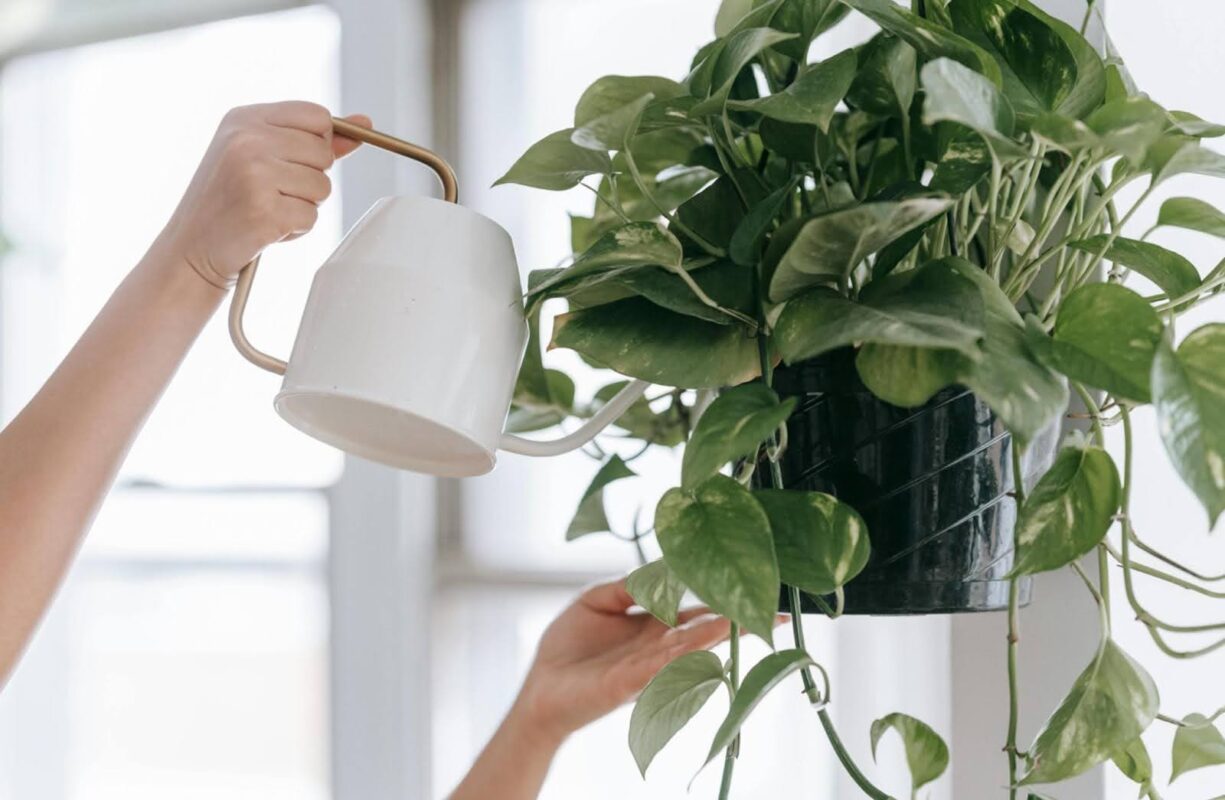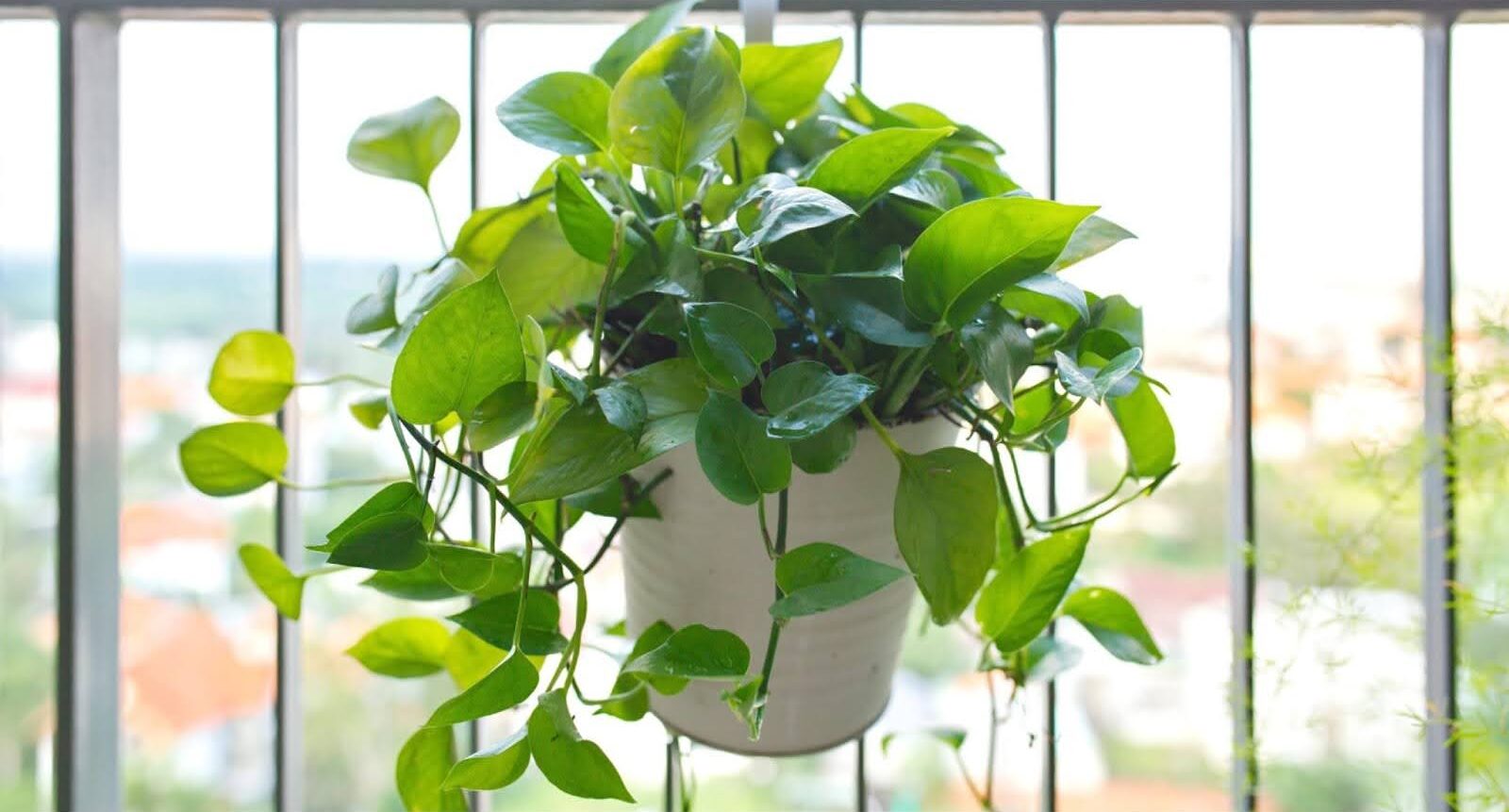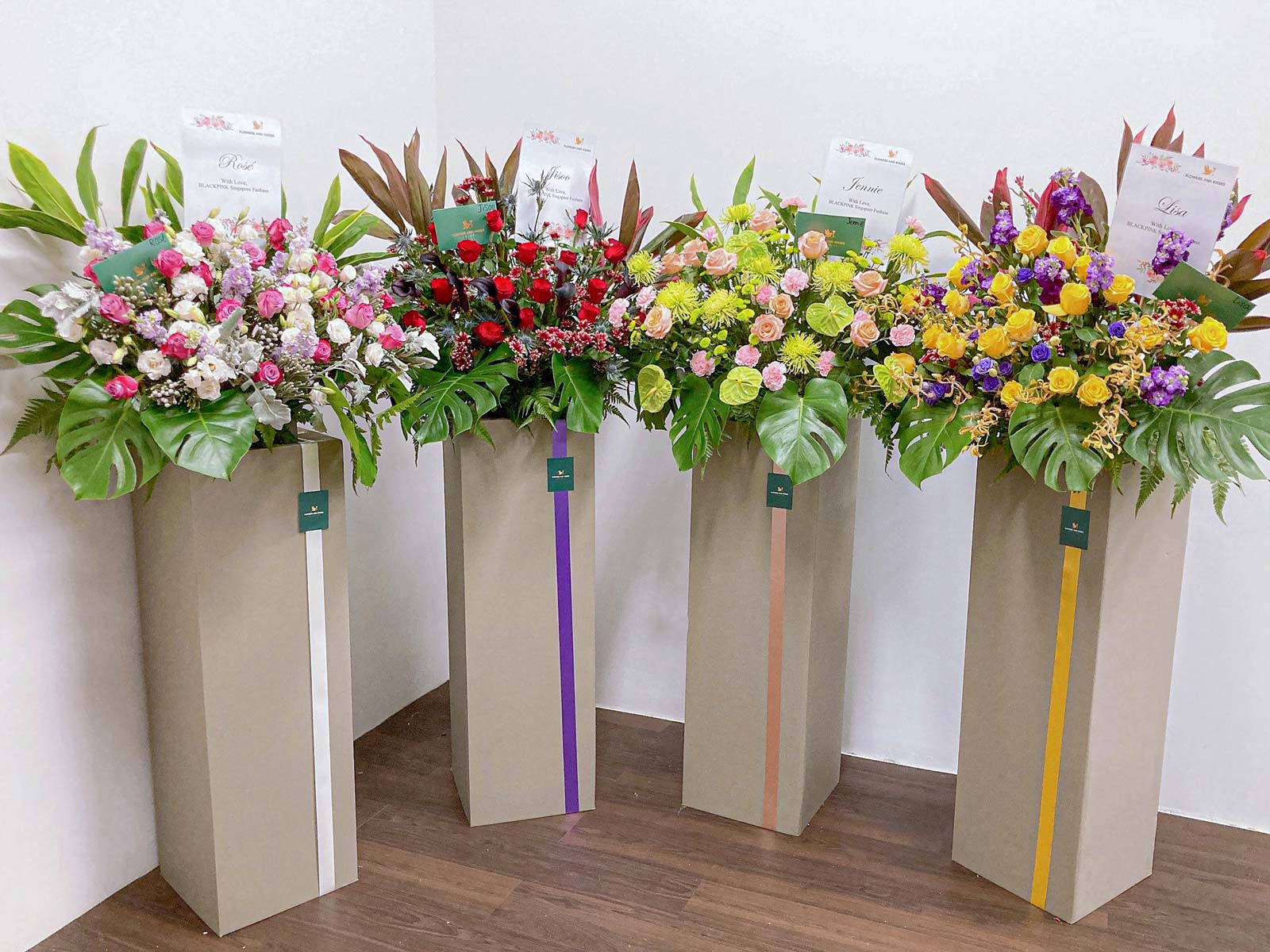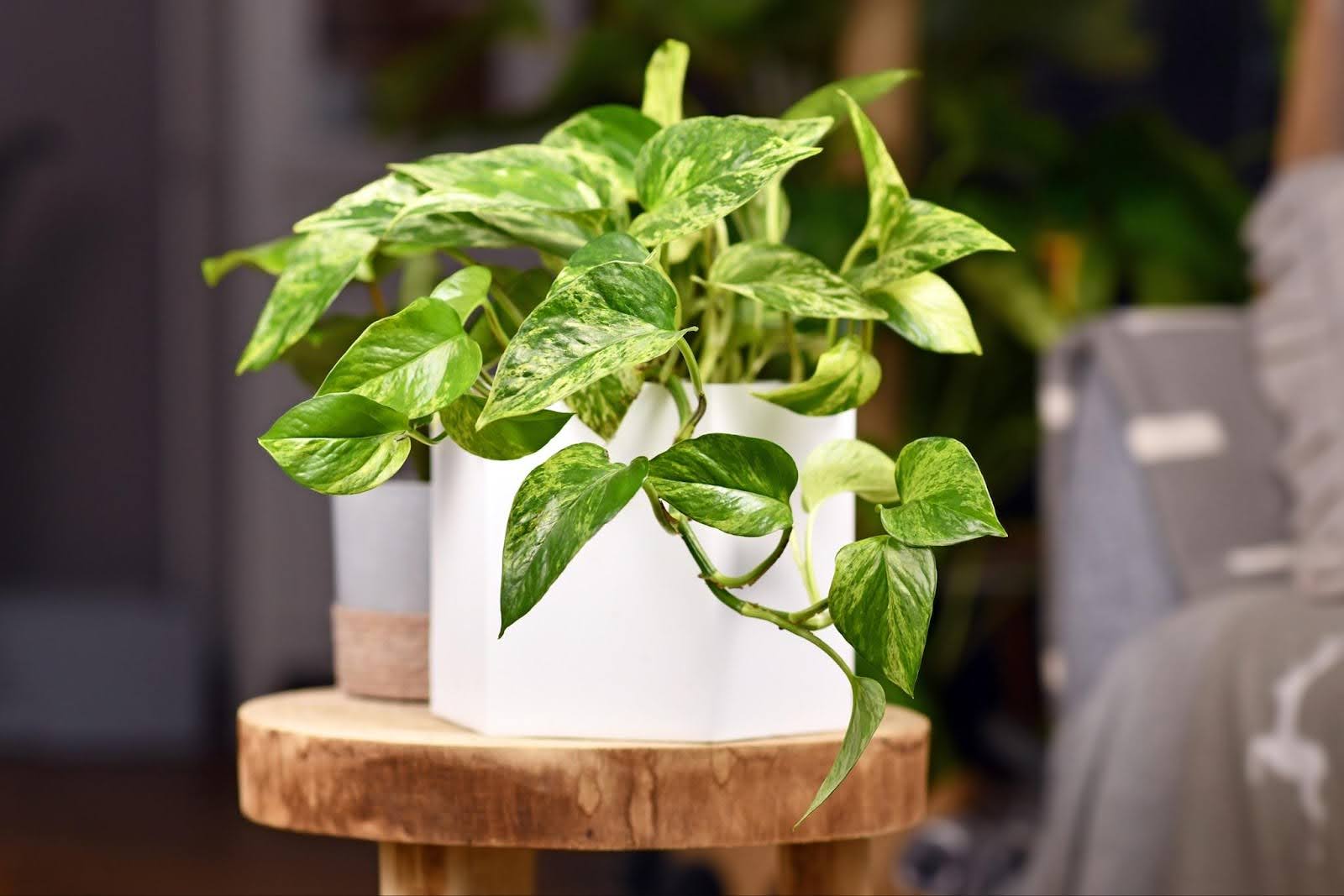With its vibrant green leaves, often speckled with creamy white or yellow, the money plant is a striking addition to any home. But the appeal of a money plant goes beyond its visual charm.
In Feng Shui, the money plant is believed to attract wealth and good fortune, making it highly desirable among homeowners in Singapore. Thankfully, for those lacking green thumbs, the money plant is known for being relatively easy to care for, thriving in our tropical climate with just a little know-how.
To make sure your money plant brings you all the good fortune it promises, here’s a comprehensive guide on how to care for your money plant to make sure it flourishes.
What You Need to Know about Money Plants
Originating in the lush rainforests of Southeast Asia, the money plant, also known as Epipremnum aureum, has become a global sensation.
Its popularity stems from its iconic heart-shaped leaves, cascading vines, and reputation for being low-maintenance. In Singapore, the money plant is a particularly beloved common household plant for its resilience and for its association with prosperity and good luck.
Beyond its aesthetic appeal and significance in Feng Shui, the money plant offers surprising benefits, with some believing it can boost mood and creativity.
Benefits of Having a Money Plant Indoors
More than just a pretty face, the money plant offers a wealth of benefits that make it a fantastic addition to any indoor space, be it your home or office.
- A Breath of Fresh Air: The money plant actively contributes to a healthier home in Singapore by naturally filtering toxins from the air.
- Instant Jungle Vibes: With its lush, cascading foliage, the money plant can instantly transform any space into a green oasis, adding a touch of nature and vibrancy to your décor.
- Feng Shui Powerhouse: In Feng Shui, the money plant is believed to attract wealth, prosperity, and positive energy.
- Low-Maintenance Marvel: Money plants are straightforward to care for. They tolerate a wide range of conditions and require minimal attention, making them perfect for beginners or those with busy lifestyles.
Common Issues When Owning a Money Plant
While money plants are generally easy to care for indoors, some helpful tips can help you avoid common issues. Here are some problems to watch out for and how to identify their causes:
Overwatering is often the culprit. Soggy soil prevents roots from getting oxygen, leading to root rot and yellow leaves. Ensure your pot has drainage holes and allow the top inch of soil to dry between waterings.
This usually indicates underwatering. When the soil is too dry, the money plant can’t absorb enough moisture. A good tip is to check the soil regularly and water thoroughly when the top inch feels dry as part of your indoor plant care routine.
Dry air or excessive sunlight can cause brown tips. Dry air makes the leaves lose moisture, while intense sunlight can scorch them. Increase humidity by misting the plant or using a humidifier, and avoid placing it in direct sunlight.
This happens when the plant isn’t getting enough light. It stretches towards light sources, resulting in long, thin stems. To prevent this, one indoor care tip is to ensure your money plant is in a bright location with indirect sunlight.
How to Care for a Money Plant

Providing the proper care is key to keeping your money plant lush and happy. Here’s a guide to help you nurture this popular houseplant:
- Water your money plant every 2-3 days or anytime you feel the topsoil is dry.
- Don’t overdo it with the watering can! Money plants are sensitive to overwatering, so ensure the soil is moist but never soggy.
- During the cooler months, you can water less frequently.
- Bright, indirect light is ideal for encouraging healthy growth and vibrant foliage.
- While adaptable to lower light conditions, your money plant will truly flourish in a well-lit spot.
- Take care to avoid placing it in direct sunlight, especially during the midday hours, as this can lead to leaf burn.
- Comfortable room temperatures in Singapore are perfect for money plants, which prefer a range between 18°C and 30°C.
- The naturally humid environment in Singapore is also well-suited to this tropical plant.
- Choose a well-draining potting mix that allows for good air circulation around the roots.
- To support healthy growth, feed your money plant with a balanced liquid fertilizer once a month.
Propagating Your Money Plant
One of the joys of owning a money plant in Singapore is how easy it is to propagate. Here are two simple methods to try:
- Snip a healthy stem just below a node (where the leaves emerge) with at least 2-3 leaves attached.
- Place the cutting in a jar or glass of water, making sure the node is submerged.
- Position the jar in a bright spot with indirect light, and refresh the water weekly.
- Plant the cutting directly into a moist, well-draining potting mix.
- To create a humid environment and encourage rooting, cover the pot with a plastic bag, creating a mini greenhouse.
- Once roots have developed, you can remove the plastic bag and repot the cutting into a larger container.
Feng Shui and the Money Plant

In Feng Shui, the money plant is more than just a pretty houseplant—it’s believed to be a powerful symbol of wealth, prosperity, and good fortune. Its vibrant green leaves and upward growth are associated with positive energy flow and abundance.
To maximise the money plant’s Feng Shui benefits, consider its placement carefully:
- Near windows or entryways: Placing your money plant near a window or entryway is thought to invite wealth and prosperity into your home or office.
- Southeast corner (wealth corner): In Feng Shui, the southeast corner of a space is associated with wealth and abundance. Placing your money plant in this area is believed to amplify its positive effects.
To further enhance the symbolism of your money plant, you can:
- Use decorative pots: Opt for pots in colours associated with wealth and prosperity, such as red or gold.
- Pair with other Feng Shui elements: Combine your money plant with other auspicious elements, such as a water fountain or crystals, to create a harmonious and prosperous environment.
FAQ About Money Plant Care
A good rule of thumb is to water your money plant every 2-3 days or whenever the top inch of soil feels dry to the touch. Remember that overwatering is a common problem, so it’s better to err on the side of caution when it comes to indoor plant care.
Yes, money plants are quite adaptable and can tolerate low-light conditions. However, they will thrive and grow more vigorously in bright, indirect light. If you notice your money plant becoming leggy or producing smaller leaves, it might be a sign that it needs more light.
Overwatering can quickly lead to root rot, which can be fatal for your money plant. Keep an eye out for these signs of overwatering:
- Yellowing leaves: This is often the first and most noticeable sign.
- Mushy stems: The stems may feel soft and mushy to the touch.
- Foul odour from the soil: Overwatering can create a stagnant environment that promotes the growth of bacteria and fungi, leading to an unpleasant smell.
If you suspect you’ve overwatered your money plant in Singapore, take action immediately. Repot the plant into fresh, dry soil and reduce your watering frequency.
Unfortunately, money plants contain insoluble calcium oxalates, which can be mildly toxic to cats and dogs if ingested. Chewing on the leaves can cause oral irritation, drooling, vomiting, and difficulty swallowing. It’s best to keep your money plant out of reach of curious pets or consider choosing an alternative pet-friendly indoor plant in Singapore from Flowers and Kisses.



